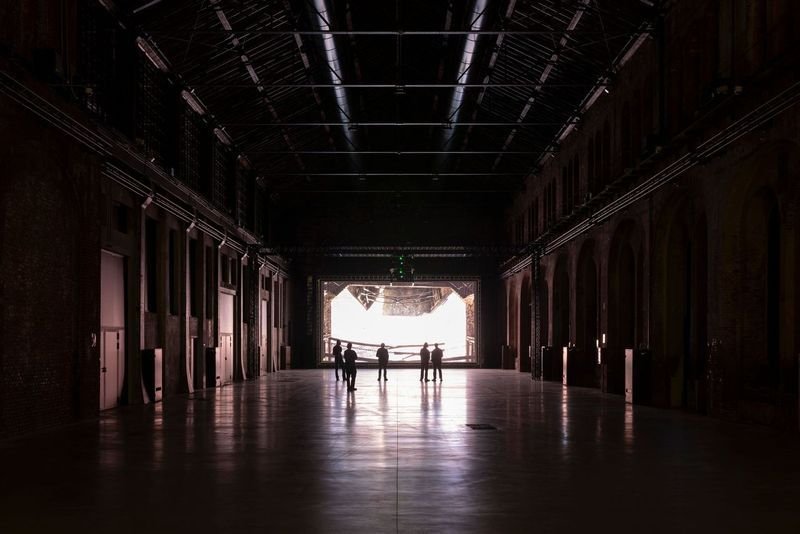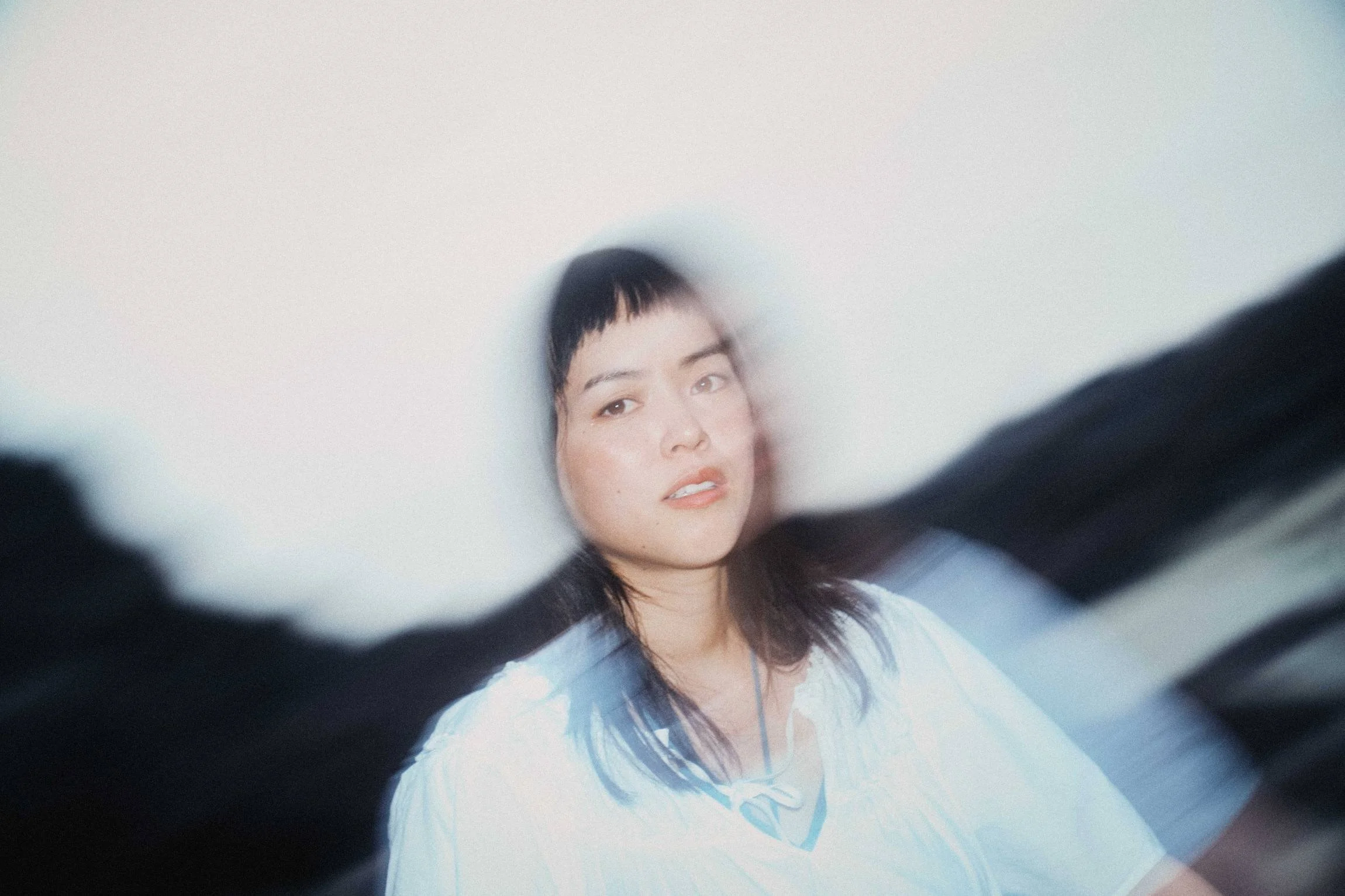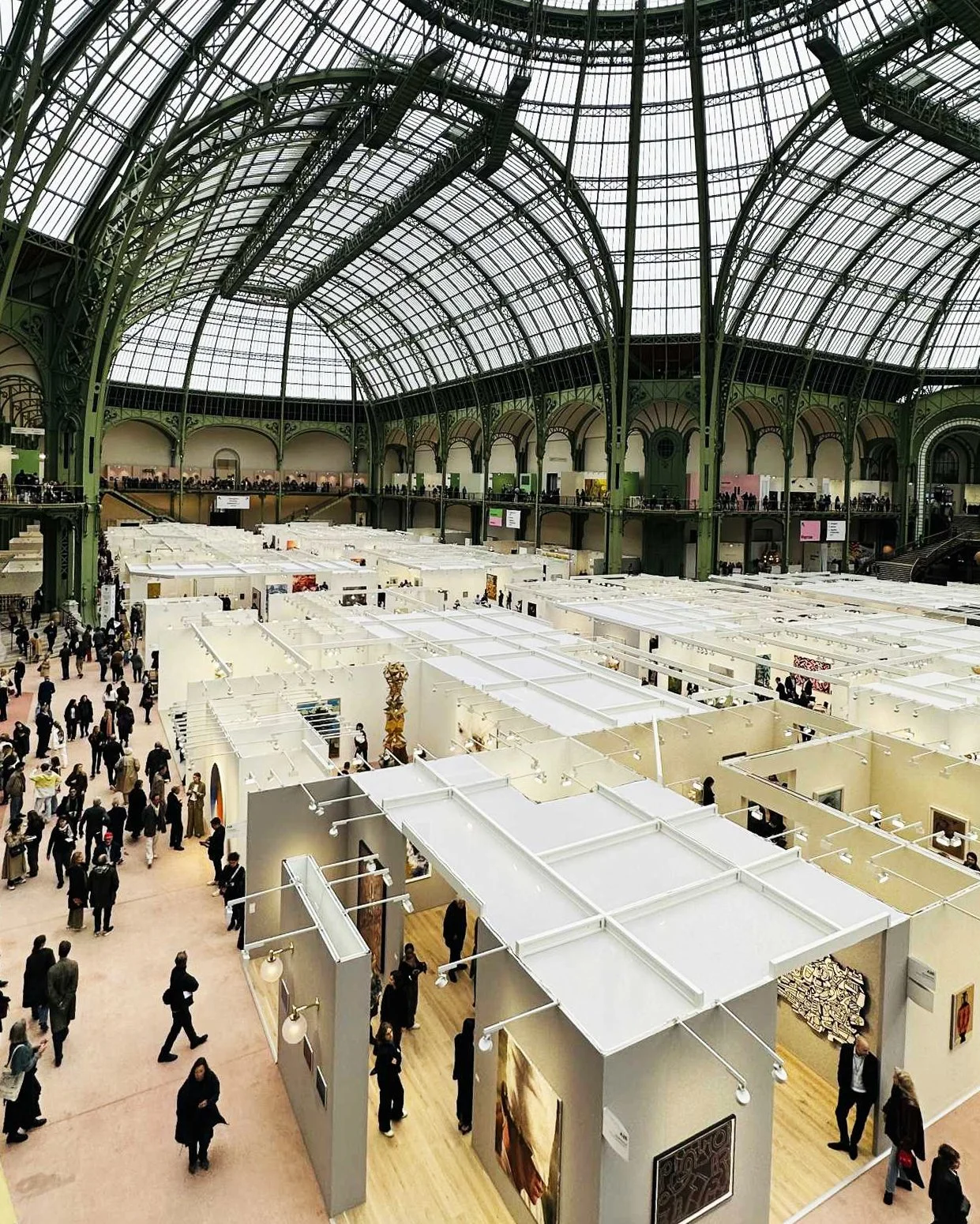A View on ART WEEK in TORINO by COEVAL
Join us on a walk (there’s a surprising lack of buses around here) through the bustling streets of Turin for Art Week. Just outside @artissima, you’ll find a vibrant scene of independent spaces, fresh new projects, impromptu happenings, late-night dinners, and curators and artists who are eagerly anticipating their first sip of Pastis.
Cripta747
Lee Fraser and Federico Pozuelo
Heith & Visio
Cripta747 has become a must-stop on the Art Week map, opening the doors of its new location at Via Giolitti 32. With a revitalized program set to launch in March 2025, Cripta747 aims to breathe new life into curatorial projects and the surrounding neighborhood. This season, they’re unveiling two pieces, a multimedia installation and a night show.
Zoom-in, sound and visual artifacts, narrative framing, and electronic music, all in quadraphonic sound. The multimedia installation The Unpaired Eye by Lee Fraser and Federico Pozuelo is a reflection on the pineal gland as the “liminal threshold of bilateralism” and the blindness of the eye, filmed and presented at Cinema Teatro Monterosa. How does our perception move between the real and the distorted, and how can we represent the hyperstimulation with which we all must, in our own way, contend? Fraser, a London composer focused on electroacoustic and synthetic sound, joins forces with Madrid’s Pozuelo, who works with video and diverse media to analyzes local realities through history and politics, remixing cinematic genres.
In a continued exploration of abundance and sensory overload, Heith & Visio confront the mysteries for which Turin is known, from its subterranean secrets to the theme of digital dematerialization. As a response to their Cripta747 residency, they present i hate texting, i just want to hold your hand, a lo-fi 45min video projected across a megascreen and immersive sound system. Filmed in Turin’s Rivellino degli Invalidi, this work combines a live-recorded dramaturgy of images and sounds with audio layers that combines human voices, folk instruments like the hurdy-gurdy, bass and lute, and traces of folk, trance, and electronic music. The city’s mysteries are depicted in a dystopian, ambiguous style through AI-modified visuals, telling an occult story that touches on the city itself, digital platforms, algorithms, memes, and, upon closer look, biopolitical theories and the contamination of the underground. Under their pseudonyms, Italian artists Daniele Guerrini and Nicola Tirabasso draw musical inspiration from reality and its melancholic undertones.
Curated by Caterina Avataneo, Alessandra Franetovich, and Cripta747 founders Elisa Troiano, Alessandro Tripodi and Camilla Zennaro, this exhibition embodies Cripta747’s renewed vision and its dedication to innovation, collaboration, and artistic experimentation.
@cripta747
@federico_pozuelo
@heith___
@visio____
@mitmirtanz
@alexandrotripodi
@camizii
@mishrafac
@alessandrafranetovich
@cateavataneo
#Lee Fraser (Composer)
Osservatorio Futura
Tuttissanti by Danilo Sciorilli
Humor, irony, and and a dose of culture. This is the promise of Osservatorio Futura’s latest exhibition and happening. A militant and independent research hub, Osservatorio Futura is closely tied to fanzine production and alternative publishing. An enjoyable evening of conversation and exchange, perfect after a whirlwind of busy days. But who really watches a show? Could the tragedy of art be that it only deals with... art?
The evening’s main feature is Tuttissanti, a solo exhibition by Danilo Sciorilli, accompanied by a collective happening. Sciorilli’s self-ironic work fits seamlessly into Art Week’s lively atmosphere as he crafts “saint cards” of artists from different generations who, each in their own way, have engaged in critiques of the art world from the inside. The event brings this idea to life through a series of microphone readings accompanied by liturgical chants, a light yet profound moment of reflection featuring readers like Franco Ariaudo, Franco Broccardi, Giacinto Di Pietrantonio, Giuseppe Frangi, Linda Fossati, Francesca Referza, Barbara Ruperti, Deborah Maggiolo, Giorgio Valentini, and the exhibition’s curators.
In celebration of the show’s opening, Osservatorio Futura has also published its second printed edition, released at Spazio Contrada at the Murazzi during the exhibition FLOW. Shifting Memories by Daniele Di Girolamo and Claire Frachebourg, in collaboration with @sonro.project and @lemme_art_contemporain.
@osservatoriofutura
@danilo_sciorilli
@daniele_digirolamo
@claire_frachebourg
@sonro.project
Sonro
Flow. Shifting Memories
Moving, transforming, returning to being, and flowing continuously. Walking along the Murazzi embankment of the Po, bustling and illuminated by water reflections, we find Spazio Contrada, hosting the exhibition Flow. Shifting Memories, curated by Sonro. This collective, created through the synergy of curators, artists, and researchers, explores sound as a central form in contemporary art, transforming it into artworks, listening events, podcasts, and cross-cultural sound practices both in Italy and internationally.
Water, with its perpetual flow, is a fundamental element in this exhibition, creating connections between us, the space, and the sounds emanating from the works of artists Daniele Di Girolamo and Claire Frachebourg. The projects feature field recordings from the 2019 Hong Kong protests, reimagined as kinetic sculptures, and a journey to an artist residency in Greenland, represented with raw materials. On the morning of November 3, visitors can experience Di Girolamo’s sound performance Lime within the space.
Promoted by LEMME, a Swiss venue dedicated to contemporary art, in collaboration with Osservatorio Futura, the project will culminate with a riverside breakfast and Di Girolamo’s Lime performance. Where Sonro will move next, we can only wait to discover.
@daniele_digirolamo
@sonro.project
@osservatoriofutura
@lemme_art_contemporain
@traffic_gallery
@murazziditorino
@edhea_ch
@claire_frachebourg
Almanac Inn
BLUE BLUE BLUE LIMBO by Industria Indipendente
Among the projects that made a lasting impression, Almanac Inn delivered an exhibition and evening event that was nothing short of a crowd favorite.
This is not the blue of deepest silence
This is not the blue of raw masculinity
This is not international blue Klein
This is not the blue of idiot super-calm
We step into a gym space bathed in blue, with a pleasant scent lingering in the air. But what kind of ‘training’ is this? And why the fragrance? BLUE BLUE BLUE LIMBO unfolds as a sensory narrative woven from smells, sounds, wall writing, weights, punching bags, lasers, lockers, chains, tattoos, and whispered phrases—all coming together in a story of bodies, kisses, and desire. Conceived by Industria Indipendente, this solo exhibition resembles an open archive of sensations and daily life lived intensely and with a raw, sometimes uneasy pulse.
The space invites those who enter to a temporary occupation of time and place, a 'training' to truly feel with the nose and all the senses, aided by literary references like Kathy Acker and Derek Jarman. Fragments of sound and scent diffusers create a sensual atmosphere, where text expands onto the body, forming a habitat: ‘From start to finish of each training, to keep the intensity, I must keep counting’. The evening wouldn't be complete without an afterparty at Bocciofila Vanchiglietta, with a guarantee to go 'until late'.
Founded by Erika Z. Galli and Martina Ruggeri, Industria Indipendente is a creative and research collective working across performance, visual, sound, and theater arts. No matter the medium, their work reflects on the relationship between human beings, the body, and nature, building worlds of alliances, community, and a constant search for personal identity. Known to many for Merende, a truly 'embodied' happening of rave culture, music, transfeminism, and queerness, they explore themes of sharing, hospitality, and collective experience. Their dramaturgies—rich with philosophy and essays—are always intense and conceptually charged… and their music, truly powerful.
Almanac Projects, based between London and Turin, is an organization dedicated to the free expression of art, moving across collaborations and diverse projects. They focus on solo shows of emerging artists and educational initiatives, emphasizing respect for diversity, inclusivity, and the exchange of ideas.
My phone almost flew out of my hands. Arcangelo Sassolino brings "Afasia 1" (2008) to life - a brutally destructive installation resembling a cannon, staged in the opulent, baroque ballroom of the historic Principi di Piemonte Hotel in central Turin. The air is tense, the mood dark. Before us stands an immense cannon, glass bottles, and a nitrogen tank, ready to launch a beer bottle at an unseeable speed into a wooden panel. An enormous crash follows as the bottle shatters to dust, disappearing into nothingness. This moment of eerie silence before the shot—the charged anticipation—feels like the heartbeat of the piece, particularly resonant in today’s fraught world. For years, Sassolino has explored physics through sculpture, crafting dystopian environments that dissect the act of creation, destruction, and the passing of time. His work, in partnership with Galleria Continua, strips reality of its familiar metaphors, leaving us with a brutal realism that’s both raw and existential. “Neither creation of energy nor destruction of matter, but impermanence. The existential question remains the core of my work, and impermanence is all-encompassing. Often, there are resonances produced by friction, impact, or material failure", as he writes.
@galleriacontinua
@principidipiemonte_torino
ORG
Cyprien Gaillard - Retinal Rivalry
In the industrial halls of OGR on Platform 1, Cyprien Gaillard’s Retinal Rivalry unfolds on a grand screen, a film that intensifies his ongoing exploration of stereoscopic images in motion ((i.e., flat two-dimensional images made to provide an illusion of depth), a journey that began in 2015. Using avant-garde filming techniques and disorienting 3D effects, Gaillard explores a Germany built and unbuilt, its spiritual and physical layers exposed. The film’s narrative moves from Oktoberfest scenes to Roman ruins, where sculpture plays a key role, incorporating nods to Caspar David Friedrich and the oddity of a Burger King within a former electrical substation, blending graves, monuments, and the city's places and non-places. Gaillard’s sharply observant lens reveals the invisible details in vivid 4K, accompanied by a soundtrack of Sudanese music, UNESCO archives, and street sounds from Weimar. His work, often described as a form of modern archaeology, meditates on decay and destruction—perfectly suited to OGR’s massive screen, his “poetry of destruction” captures the real and the symbolic, infusing them with both mystery and melancholy. Through his documentation of ruins, fragments, and derelict sites, Gaillard reminds us that even in decay, there is life—a collective history pieced together from remnants of the past.
Slightly off route, near Ponte Vittorio Emanuele I, in piazzale Monte dei Cappuccini 7, I recommend a visit to Museo della Montagna.
Beyond admiring the view, enjoying a coffee, and contemplating Little Blue Spirits by Rebecca Horn (created for Luci d’Artista in 1999), we were captivated by the museum's permanent collection dedicated to mountain history, its myths and mysteries, and the allure of mountaineering and winter sports. Scaling a mountain, like reaching the summit of K2, was akin to “going to the moon” just half a century ago!
But our main draw was the temporary exhibition Walking Mountains, a group show that culminates a research project centered on walking as a way to immerse in mountain landscapes and rethink our connection to the world around us. The exhibition is spread across several small rooms, each crafted with a distinct atmosphere, where sculptures, videos, and sound pieces lead visitors through parallel eras, aesthetics, and natural elements.
The narrative features the work of twenty artists whose on-the-ground research acknowledges walking as a revitalizing and even subversive act, placing contemporary pieces in conversation with historical figures like Richard Long and Joseph Beuys. Walking here transforms into a radical gesture, spiritual and political, embodying disobedience and revolution. Public performances are also part of the show: on November 1, we experienced Hamish Fulton’s Walking Every Direction, a tribute to the founder of Walking Art against the backdrop of Monte dei Cappuccini. For Fulton, walking is the ultimate way to experience nature and champion its rights, inspired by Deep Ecology, Indigenous traditions, and Tibetan culture, standing apart from the materiality of Land Art.
Curated by Andrea Lerda, the show features renowned artists of Walking Art, including Fulton and Michael Höpfner.
The artists on display: Andreco, Giorgio Andreotta Calò, Joseph Beuys, Daniel Beerstecher, Ellie Berry, Ruben Brulat, Manuele Cerutti, Stefano Comensoli_Nicolò Colciago, Hamish Fulton, Bepi Ghiotti, Michael Höpfner, Jan Hostettler, Richard Long, Claudia Losi, Linda Jasmin Mayer, Luana Perilli, Ramona Ponzini, Laura Pugno, Francoise Vanneraud)
@museo_montagna
@andrea_lerda_curator
@a.walking.artist
@mic.hoepfner
Noire Gallery
Radiant Works by Giorgio Di Salvo
Tonight’s destination is Noire Gallery, a Turin-based institution located in a former industrial space - a fitting choice, as Turin offers some truly remarkable, spacious venues for creative projects. Known for capturing cultural transformations through exhibitions featuring both international and up-and-coming talent, the gallery is also home to Noire Edition, a publishing initiative dedicated to artist books, curated editions, and limited multiples.
As we enter, the space opens into a stunning brutalist design with original, oversized windows, setting the scene for a double feature: Blue Prison by Peter Halley and Radiant Works by Giorgio Di Salvo. In Radiant Works, Milan-based Giorgio Di Salvo presents a post-industrial, cybernetic aesthetic with a black-and-white, electronic, brutalist flair. Spanning a decade of exploration, Di Salvo’s work channels his background in the underground rave culture of the ’90s, his passion for music and technology, and his work across graphic design, fashion, and product design. In this exhibition, sound is paramount. Each installation, arranged with pristine hi-fi precision, aims not to create soundscapes for the space, but rather to allow sound to unfold within it, using sound waves as a form of architecture. A compelling fusionof art, sculpture, and design—precisely my aesthetic. Swing by and tell me what you think.
As I walk through the stands and aisles of Artissima, one presentation that catches my attention is Blue Velvet Gallery from Zurich, which brings the work of French artist François Durel to the fair.
Durel’s architectural series of sculptures, made from the skin of dead vertebrates, black and taut, evoke a "modernist and epidermic" cemetery of memories. The skins of the sculptures are meticulously stitched, their edges pulled tight, suggesting a silent yet carnivorous and sexualized structure. The laborious precision of the stitching and the patient interweaving of threads imbue these works with an almost sacred, punitive quality. The gallery owner shares with me that Durel’s work was featured in the exhibition Les Leçons Particières at their gallery, which also included paintings by Augustin Katz. Durel and Katz, childhood friends from similar backgrounds—lower nobility and Catholic upbringing—explore shared themes in their works: love, class culture, punishment, fervor, and the repressed expressions of deviation and triumph. Their biographical confession creates an intimate dialogue between good conduct and liberated, bourgeois-free masturbation. Durel’s work in the fair explores the dynamics between public and private spaces, involving questions of sociology, psychology, and gender politics, with artworks on the border between sexual and architectural shape.
Blue Velvet Project, founded by Pier Stuker in Zurich in 2021, presents a program of artists who investigate paradoxical, dark, or whimsical aspects of contemporary culture: "We love delicate, playful, or intricate art, but we also believe in clear and bold statements," they write. Between mystical and erotic offerings, we engage in discussions of spirituality, secrets, sanctification, taboos, punishment, and forgiveness. This is certainly an artist and gallery to keep an eye on.
@bluevelvetprojects
@francoisdurel
@artissimafair
Words by MATILDE CRUCITTI
What to read next












































